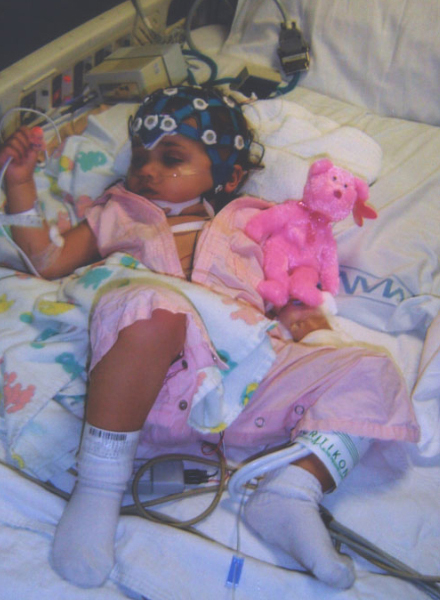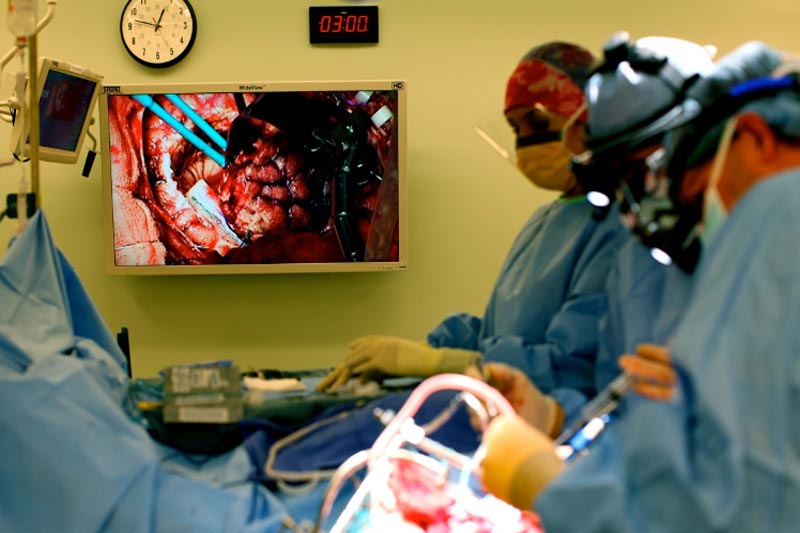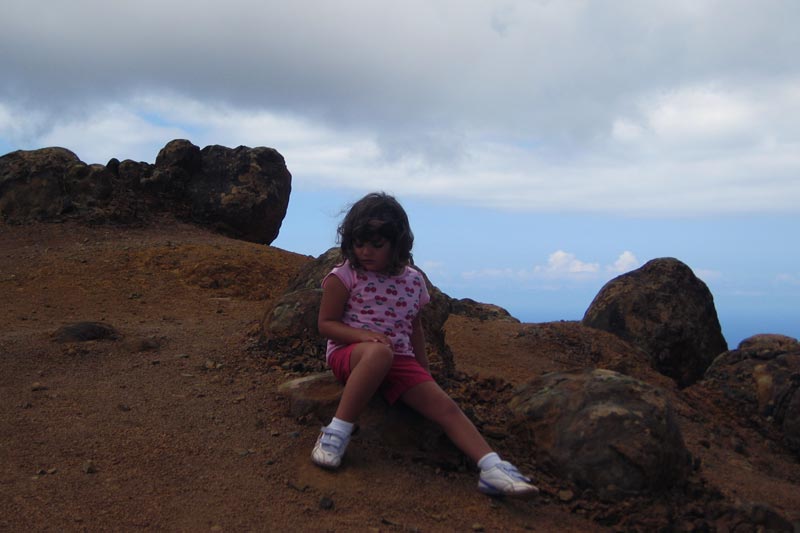My daughter has half a brain. No, really. She does.
Allow me to explain.
Sasha arrived on a Friday morning, in late-February. She was three weeks early and weighed 4.5 pounds. Aside from her low-birth weight, she was perfect. Words I used to describe her babyhood included happy, giggly, curious, active, perfect.
She crawled, explored, climbed everything, and in front of a crowd on her first birthday, Sasha took her first steps. I celebrated her milestones, and like many mothers, I took the smaller moments, such as watching her scale the couch or crawl unassisted down the hallway, for granted.
Shortly after that first birthday, our world came crashing down. Sasha was diagnosed with hydrocephalus, which in layman’s terms is excessive fluid on the brain.
Soon our lives were filled with doctors with previously unknown titles. No longer were we dealing with the pediatrician and caricatures of zoo animals on office walls, but rather Neurologists and Neurosurgeons who sent us for scary tests. CT-Scans, MRIs, and PET-Scans. In short, life was no longer made up of the mundane niceties associated with being the parent of a typical child.
I remained hopeful, yet scared. These doctors were now talking about a surgery, on my child’s brain. They assumed there was a cyst on her ventricle blocking the flow of fluids from escaping her cranial cavity. I was told my daughter would have to undergo a surgery quickly, or she would die.
A 4:45 am check-in call at the neurosurgery desk followed soon thereafter. Sasha was running around the hallways, either oblivious or uncaring about the early morning hour. She ran, her little legs carrying her as fast as they could, while I chased. It was the last time I would see her run that fast.

Several hours later, my 15-month-old daughter lay sleeping in a hospital bed. Morphine dripped into her tiny veins keeping her sedated while I sat in a chair next to her.
If I stop and focus, I can still conjure up the sounds of the Pediatric Intensive Care Unit (PICU). Whirring, and beeping. Intercoms going on and off, nurses rushing about, children crying, doctors making rounds and talking about complex medical issues. Sasha was in one of five other beds that were shoved into the same room. There was never complete silence. Never complete darkness. At least, not for the families who for days on end remained seated next to their children, the same children who were all having morphine-induced dreams and darkness.
Days after Sasha’s surgery we found out that she was paralyzed. Three years later, following a lawsuit, we would discover that the paralysis was directly related to a mistake that had been made during the surgery. To summarize, a hole had been punctured in Sasha’s brain by the surgeon’s endoscope. She could not walk, or use her left arm, hand or fingers. She completely disregarded the entire left side of her body in fact. All due to a medical mistake. In an instant, my baby, my only child, had gone from running and being typical, to being paralyzed and categorized as having special needs.
In addition to the paralysis, Sasha also began having seizures. These ‘episodes’ would occur at least once a month, and would be so powerful that they would not cease for three hours on average. For a span of nearly six years, Sasha would lose a week out of every month because, in order to get the seizures to stop hijacking her brain and body, she would have to be pumped full of high doses of steroids. These medicines would cause extreme lethargy in a full-sized adult, not to mention a small child. Every month, it was the same routine. The seizure would start, I would call 911, an ambulance would take us to the Emergency Room, and Sasha would be pumped full of steroids until the seizures stopped. Then it was home again, and let her sleep for 4 days until she felt alert enough to go back to school. Meanwhile, I was a single mother, taking days off of work every month, to tend to my child. It was not an easy road.
Finally, a very wise neurologist made a suggestion that would once again change the course of our lives forever. She referred us to a neurosurgeon at UCLA Medical Center in Los Angeles, who was performing a breakthrough procedure on children afflicted with seizures. We learned another word, hemispherectomy.
A hemispherectomy is a radical and rare surgical procedure, which includes the removal or disablement of one cerebral hemisphere of the brain. In other words, I had to decide whether to allow my child to undergo yet another brain surgery, one in which an entire half of her brain would be lost.
For all parents who consider this surgery, it’s not a simple decision to make. Bearing in mind our history with brain surgeries, this was a nearly impossible decision to make. I wanted the seizures to stop, knew that if Sasha continued to have seizures the possibility of her either having irreversible brain damage or dying was a very large possibility. I also thought that the idea of removing half of her brain sounded like science fiction. In my mind circled images of a Dr. Frankenstein type character with harvested half-brains in jars of formaldehyde.
I spoke with families whose children had gone through the same procedure. Mothers, who just like me, had made this gut-wrenching decision.
After six months of fence-sitting, I relented. Sasha went through several rounds of EEG-monitoring so that the surgeon would be able to pinpoint as accurately as he could the exact spot in the brain where the seizure activity was coming from. It was no surprise when it was discovered that the spot of localization in her brain was the exact place where the endoscope had made a hole several years earlier.

June 24th, 2010, the morning of Sasha’s hemispherectomy, I worried that I’d made a horrible mistake. I worried that I’d lose her during the surgery, which was expected to last up to 12 hours. I worried that even if she did survive, that she would somehow be different, that the surgeon would remove the part of her brain that stores personality and language. Would she be blind? Would she remember me? Would she have a better quality of life, or had I just made a decision that would make it even worse?
Prior to surgery, several rounds of EEG readings had shown the damage to Sasha’s brain, but it wasn’t until the surgeon had opened up the skullcap, that it was revealed in glorious Technicolor just how much damage was present. The eight hours that she was in surgery felt like days.

When the surgery was all done, Dr. Gary Mathern, the neurosurgeon on Sasha’s case, came out and said to me,
“The best thing you could expect to hear on a day like today is for me to tell you that it was another typical day at the office … and it was.”
In that instant, six years of stifled emotions came flooding out in a sea of tears. He said, “This is the part when you get to hug the surgeon.” I hugged him tightly, and repeated the same words over and over, “Thank you.”
When I went in to see Sasha in recovery, not only was she able to see and recognize me, but she also yelled out to anyone who would listen to turn off the lights, as she was trying to sleep. She didn’t lose anything from losing half of a brain, most certainly not her personality.
Before you throw a judgment upon me for even considering this type of surgery, allow me to provide answers to the most frequently asked questions.
- We tried medicines. Several of them, if not all of them.
- We tried the ketogenic diet.
- I did get a second opinion.
- I did my research. So much research. If you’d like to see it, please contact me, and prepare a moving truck to transport all of the papers, journals, blogs, internet searches, books, and emails.
- I talked to other families who’d had the surgery. You can too at www.hemifoundation.org
- I was terrified.
Upon first glance, a story about a hemispherectomy may seem like science fiction, but it’s actually a story about survival, overcoming adversity, and love.

The years following Sasha’s surgery have been frantically filled with therapy appointments of every possible kind, from aquatic to occupational to physical. Her doctor appointments fill my calendar while I forget to schedule pap smears and mammograms of my own. Mixed in with all of the madness that comes with raising a child with special needs, she is now involved with more typical activities as well. She participates in her school’s theater program, and being a pre-teen, she’s becoming more preoccupied with activities with her friends.
It’s by no means a calm life, but it’s a seizure-free life. The time we spend now is not considered lost to a medical error. Rather than simply living a life, we’re thriving. That was a decision that we had to make. We had to learn how to live with special needs, and how to not let a diagnosis control our lives. It’s not easy, it will never be easy. However, as a family, we allowed ourselves to mourn the loss of limbs, of a brain hemisphere, of friends who couldn’t handle the situation and family members who thought that we were too much of a burden…and we decided to kick-ass at living.
My daughter is my hero, a survivor of terrible mêlées, many of which were fought on the battleground in her head. Like many other survivors of war, she lost some and won some. She came out on the other side of a terrible medical error, with half of a brain.
Sasha has shown me more about emotional intelligence than most adults I’ve known. While she is cautious, she also faces obstacles and changes in life with an attitude that says, I got this. She’s wise, far beyond her 12 years. She’s a mini-gourmet, with her very own foodie blog for kids in Vegas; and is an evangelist for the kind of satisfaction that can be found in a nice steak tartare at dinner. She loves crafting and makes cards for just about everyone she meets. She cares about people and hates seeing animals in pain. While her limbs may not work as perfectly as a typical child’s does, her understanding and realization of being seen as different are very much in tune.
The Beatles said, that “In the end, the love you take is equal to the love you make.” Sasha has most certainly taken and given her fair share of love, but she has provided me with much more than that. I no longer envy perfection, long believing such a thing doesn’t exist. My sense of self-worth is not based on how many things I have, rather it’s based on the level of happiness in my home. I’m far less selfish and narcissistic than I used to be. Spend enough time in emergency rooms and ‘How’s my hair?’ becomes a question you don’t even think to ask.
Here’s the real kicker … Sasha and I are best friends. We’ve gone through hell together, fighting these battles (medical and otherwise) as a dynamic duo. Our motto through it all has been “It’s you and me.” We get through the tough stuff together. That is something that had to be earned. Her medical battles will never be over although the focus of them will change over time. As long as she will allow me to, I will continue to fight those battles with her. And when the day comes that Sasha, with her brilliantly-functioning half a brain, turns to me and says, “I got this, Mom.” I’ll still be there for her. Always.
To find out more about hemispherectomy surgery, visit the Hemi Foundation.
To donate to research that benefits kids like Sasha who are recovering from traumatic brain injuries, contact The Brain Recovery Project.

Thanks for the wonderful story. My daughter also had her hemispherectomy by Dr. Mathern, and it was the best decision we’ve ever made. Your story is very similar to ours, in fact, Kennedy had her surgery at the end of April 2010, right before Sasha’s. I’m very glad we’re already friends on Social Media. Maybe we can get the girls together if you ever make it up to Reno, or if I make it down to Vegas.
Thank you for reading my story Mary!
What a brave and beautiful mother/daughter story. Thanks so much for sharing your journey and heart.
Dori, thank you! Sasha is a ‘one-in-a-million girl’. I’ve no doubt that she will be a storyteller in her own right one day. And won’t that be fabulous? All the love!
Hi Jackie, and thank you! Sasha has most certainly given me a lion’s share of worry. The good news is that I realized just how strong we both can be. Thank you for the kindness.
Hi Bob, thank you for the well-wishes. I’ve found that no matter what the case may be, that a child’s illness affects the parents greatly. Perhaps another post is in order to discuss the outcome…perhaps.
Thank you, Jenean!
Thank you, CeeCee! Hugs to you!
Rebecca, please feel free to friend me on Facebook. I’d love to hear and see the updates on your granddaughter. Much love to your family!
Thank you, Caroline!
Brava, Momma! Thank you for sharing your story. You and your Sasha are champions!
My granddaughter and I are going through a very similar journey. Her seizures are from damage from a brain aneurysm and stroke. We had no idea. We have battled seizures since she was 3 yrs old. She’s getting ready to turn 7. She is 5 months post Hemispherectomy. She has paralysis in left hand and arm. We’re still battling a few surgical side effects but so far seizure free. Her sense of humor through it all amazes me. Her spirit is unbreakable. She is so smart. I agree it is not easy. Constant therapies and Dr appointments but I completely believe we made the right decision for our children. Good luck to you and your sweet girl.
Thank you for sharing such a personal story. You are a wonderful mom. Hugs to you and your daughter.
Truly awe inspiring…both of you. Thank you for sharing!
It was hard enough sending my weeks-old son off for a very minor cleft repair. I can’t imagine the fear and anxiety you must have been going through for these surgeries.
Were there any repercussions for the surgeon?
Grace and peace to you and Sasha.
Dear Shanna,
Thank you for sharing your daughter’s heartbreaking, powerful, and inspiring journey.
Your strength, resilience and adoration for your beautiful girl is incredible.
They say God, (or whatever you believe) gifts each of us only as much as we can bear.
Yours and Sasha’s, is story overflowing with the love of one million Angels. <3
Blessings,
Jackie
Shanna,
Thank you for sharing this inspiring story. Your warrior daughter is someone I would love to meet someday! In motherhood, I believe we do what we have to do for our children, but whoah, you got a couple of other mothers’ share, too. Your devotion and stamina is so amazing to me. And how wonderful that you are lucky to have the beautiful Sasha for a daughter❤️.
Love from another Mum–Dori
P.S. You’re also a great writer!